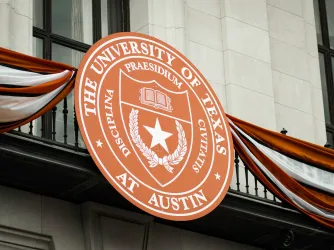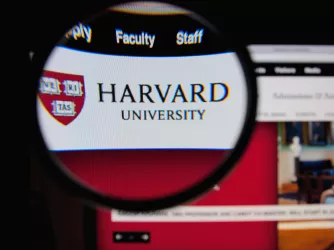Table of Contents
Kansas Universities Fight Over the Limits of Title IX’s Reach

Last week on The Torch, we reported on the amici curiae brief filed by FIRE and the Student Press Law Center (SPLC) in Yeasin v. University of Kansas, currently before the Kansas Court of Appeals. This week, we want to highlight another amicus brief filed in the case—one that is noteworthy not just because of what it says, but because of who is saying it. Kansas State University (KSU) weighed in against its sister state school, the University of Kansas (KU), and the two institutions are battling it out over the scope of a university’s obligation to punish students’ off-campus conduct and speech under Title IX.
Navid Yeasin, a KU student, was expelled after his ex-girlfriend, also a student, filed a sexual harassment complaint against him with the university. While it investigated the allegation, the school issued a no-contact order, forbidding Yeasin from communicating with his ex-girlfriend. KU found him guilty of sexual harassment based solely on off-campus conduct (which took place over the summer) and found that he violated the no-contact order by tweeting about his ex-girlfriend (who was blocked from his Twitter feed).
FIRE and SPLC’s amici brief focused on the free speech implications of punishing Yeasin for his tweets. KSU, in its own amicus brief, disputed KU’s assertion that it was required to punish purely off-campus conduct under Title IX. FIRE applauds KSU for pointing out that there are limits to what colleges and universities can justifiably do in the name of Title IX compliance. The federal statute does not—contrary to what KU thinks—require a college to subject students to 24/7 policing.
The Kansas trial court considering the case held that KU’s student conduct code limited its disciplinary jurisdiction to conduct occurring on campus or at school-sponsored events. In its appeal, KU argues that Title IX compels it to address sexual harassment and points to the 2011 “Dear Colleague” letter (DCL) issued by the Department of Education’s Office for Civil Rights (OCR) for authority that this obligation extends off campus. The DCL, according to KU, requires an institution to consider the continuing effects of off-campus harassment on a student’s educational setting. KU argued that Yeasin’s off-campus conduct continued to cause his ex-girlfriend anxiety when she returned to campus.
KSU argues vehemently that Title IX does not require colleges to punish students for off-campus conduct occurring outside of the school’s control. It points to the Supreme Court’s 1999 decision in Davis v. Monroe County Board of Education for support. In determining when an educational institution can be liable for student-on-student sexual harassment, the Supreme Court held in Davis that a school could only be liable where it exercised “substantial control” over both the harasser and the context in which the harassment occurs.
KSU argues that, with regard to off-campus conduct, the 2011 DCL can and should be read consistently with Davis’ “substantial control” requirement. The DCL, it points out, states that the effects of off-campus conduct should be considered “when evaluating whether there is a hostile environment on campus.” So, off-campus conduct can provide the necessary context to understand on-campus conduct. For example, if a male student sits behind the same female student in class each day, his behavior is unlikely to be harassment. If administrators learn that he assaulted the female student before they enrolled in the school and then he sits behind her in class every day, his on-campus conduct, in that context, may be part of a pattern of harassment.
KSU goes on to argue that even if the DCL did require punishment of purely off-campus conduct, OCR’s interpretation of Title IX would be due no deference by universities. Because Davis read the “plain language” of Title IX to limit the statute’s scope based on the actual control a school exercised over the punishable conduct, OCR cannot rewrite and expand the law through its own interpretation.
Finally, KSU makes the practical point that it is “absurd and illogical” to turn universities into “de facto police departments with worldwide jurisdiction.” The more logical position, rather, is that institutions are responsible for what happens on their own campuses or in their programs and activities.
In a reply to KSU’s amicus, KU rejects the relevance of Davis to the case under consideration. It notes, correctly, that Davis addressed a private cause of action for damages against an educational institution under Title IX. In other words, Davis examined the issue of when a school is liable for failing to act. KU argues that in Yeasin, the issue is Title IX’s regulatory jurisdiction, or, in other words, what OCR can tell colleges they have to do to address alleged harassment. OCR’s regulatory authority, KU says, has always been interpreted broadly, and the DCL instructs schools to take action, investigate, and protect complainants when they receive a sexual misconduct complaint, regardless of where the alleged misconduct occurred.
Unfortunately, KSU most likely won’t get another shot at KU’s arguments. (Amici usually don’t get to file reply briefs.) But we can certainly imagine a few things KSU might say.
First, KU seems to assume that because the Davis Court addressed a private cause of action, its interpretation of Title IX has no bearing at all in the enforcement context. However, there’s a big difference between acknowledging that the Supreme Court’s interpretation of a statute is not directly controlling and finding it irrelevant. Indeed, OCR agrees. In its 2001 Revised Sexual Harassment Guidance, OCR acknowledges that Davis is limited to the context of a private action for damages, but goes on to say:
One commenter [on proposed guidance] urged OCR to provide distinct definitions of sexual harassment to be used in administrative enforcement as distinguished from criteria used to maintain private actions for monetary damages. We disagree. First, … the definition of hostile environment sexual harassment used by the Court in Davis is consistent with the definition found in the proposed guidance … Second, schools benefit from consistency and simplicity in understanding what is sexual harassment for which the school must take responsive action. A multiplicity of definitions would not serve this purpose.
Moreover, and more importantly, when the Davis Court spoke of “substantial control,” it was interpreting the language and scope of Title IX, not merely the circumstances under which a college may be liable for damages (which occurs when the school is “deliberately indifferent” to harassment). The Court noted that the language of Title IX requires that harassment occur “under” the “operations of” a school in order to trigger a duty to act. Considering this language, it held that substantial control was a prerequisite to liability. Therefore, according to the Court, the plain language of Title IX includes a nexus requirement.
Next, let’s look more closely at what KU claims is required of it when a sexual misconduct complaint is received. As KU points out, the DCL indeed instructs colleges to process a complaint in accordance with its regular procedures, regardless of where the alleged misconduct took place. It says a school should take steps to protect a student who was assaulted off-campus from further harassment or retaliation on campus. KSU does not argue that there is anything wrong with these requirements.
However, KU then makes an unwarranted logical leap: It interprets this guidance to require that it take serious disciplinary action against a student for off-campus conduct without any finding that he contributed to a sexually hostile environment on campus. KU’s briefs dance around a few accusations of Yeasin’s friends taunting his ex-girlfriend on campus, seeking to imply an on-campus connection. But KU never explains why actions taken by Yeasin’s friends would help justify his expulsion, rather than justifying steps to protect the complainant by, for example, imposing no-contact orders on the taunting students. The reason is plain: the justification for taking protective steps is not the same thing as the justification for punishment.
KSU has the right of this situation. Title IX does not and cannot require a university to control student conduct at all times and places regardless of what happens within its grounds and programs. KU’s claim to that end is dangerous and impractical. It provides no logical limit to a university’s obligation to act and tells students that their actions and words, anytime and anywhere, are subject to discipline. Title IX has to have limits and, again, we applaud KSU for standing up to say so.
Recent Articles
FIRE’s award-winning Newsdesk covers the free speech news you need to stay informed.

FIRE and ACLU of TX: University of Texas must drop unconstitutional drag ban

George Mason University calls cops on student for article criticizing Trump

‘I hate freedom of opinion’ meme leads to sentencing in German court
